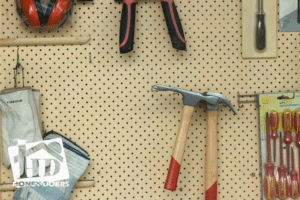A faucet might seem like an afterthought during a kitchen remodel, but it plays a very important role in the room’s overall style and functionality.
The sink is one of the key areas where the eyes are drawn in a new kitchen. Top-quality faucets and other hardware will help it stand out and look great.
Selecting the right faucet also prevents leaks, corrosion, drips, and other problems. The best kitchen sink faucets will work well for years to come (and often have lifetime warranties to boot).
Here is everything you know about selecting the right faucets during your kitchen remodel.
Faucet Mounting Type
The first decision you must make is where you want your faucet to be mounted.
Your selection isn’t just based on your personal preferences, but also the scope of your kitchen remodeling project.
Here are your three main faucet mounting options.
Deck-Mount Faucet
A deck-mount faucet is connected to the actual deck of the sink. Most new sinks come with faucets included. However, you can also upgrade yours to different faucets of your liking.
Wall-Mount Faucet
A wall-mount faucet is connected to the wall behind your sink. Because the faucets will attach to the wall itself, you must make sure the location lines up with the water supply pipes as well as wall studs.
Countertop Faucet
A countertop faucet is located on the countertop behind the sink. This option is most common for sinks that are set down into the countertop with no protruding deck or lip.
Faucet Handle Type
Your next decision is the type of faucet handle you’d like. Though you have a lot of choices for style and finish, the main choice you must make is the handle type.
Here are your three main faucet handle options.
One Handle
The most common option for kitchen sinks, a single handle is used to turn the water on or off and control its temperature.
Two Handle
A two-handle faucet has one handle that controls hot water and another that controls cold water so you can mix them to the desired temperature.
Hands Free
An increasingly popular option, a hands-free faucet doesn’t require the use of your hands at all thanks to motion or touch activation. Many have built-in temperature control, making them a very safe option for children, the elderly, and the disabled.
Faucet Style and Finish
Now comes the fun part of selecting a new faucet for your kitchen remodel: picking the style and finish.
These elements relate to the faucets overall look and design. They’ll give your faucet that personal look that will help tie the sink and rest of the kitchen together.
Here are the three main faucet style and finish elements to worry about.
Size
Faucets come in a number of different sizes. The right size for you depends on both the mounting type and the size of the sink.
Though you should also be worried about the reach of the faucet, the height is the most common size element to think about. You want it to be high enough that it’s easy to wash dishes, cookware, and your hands underneath.
Shape and Style
The most important factor to think about when it comes to the shape of your faucet is the “arc.”The arc is the height and curve of the faucet. Not only does this add to the overall style of the faucet, but it also helps dictate its functionality.
Materials
Most kitchen sink faucets are constructed from brass, stainless steel, or plastic.
The material you choose dictates the price and “quality.” Brass and stainless-steel faucets are more expensive, but last far longer than plastic versions.
Other Factors to Consider
In selecting the right faucet for your kitchen sink, there are several other additional factors you should consider.
Here are five important factors to ask your kitchen remodeling service about.
Sink Use
What are you using your sink for? Is it just normal kitchen use? Or do you regularly use extra bulky pots and pans? Will children be using it?
These considerations will help you select the right size and shape of a faucet.
Sink Size and Location
How large is your sink? Where is it located in your kitchen? Once again, these factors can help dictate what the best faucet is for your particular situation.
Mounting Holes on Sink
A very important consideration for deck-mounted faucets are the number of mounting holes available in your sink. You must match the number of mounting holes on your faucet with those on the sink for a tight fit to eliminate leaking.
Extra Features
There are numerous extra features you can add to your kitchen sink to make it even more functional.
These include pull-down sprayers, in-faucet filters, soap dispensers, hot water dispensers, and so much more.
Additional Faucets
A regular kitchen sink faucet isn’t the only type of faucet that works in the kitchen. You can also choose from pot-filler faucets, bar faucets, and many more.
Common Mistakes to Avoid
There aren’t a whole lot of mistakes you can make when buying and installing new faucets on your kitchen sink. However, there are still a few no-no’s you should take care to avoid.
Improper Installation
An improperly installed faucet can make for a leaky or dripping sink with poor water pressure.
Poor Overall Design
Think about the overall design of your kitchen when selecting your new sink and accompanying faucets to ensure that everything works together in a cohesive style.
Failure to Meet Code Requirements
Most faucets and sinks will meet building codes right off the bat, but it’s never a bad idea to check with your kitchen remodel contractor to ensure everything checks out.
Final Thoughts
If new faucets are just one aspect of your remodeling project, consider hiring a kitchen remodeler for the job. Our professional team at Honey-Doers are a fantastic choice.
Give us a call at (952) 985-5383 or check out our online contact form to get in touch.



